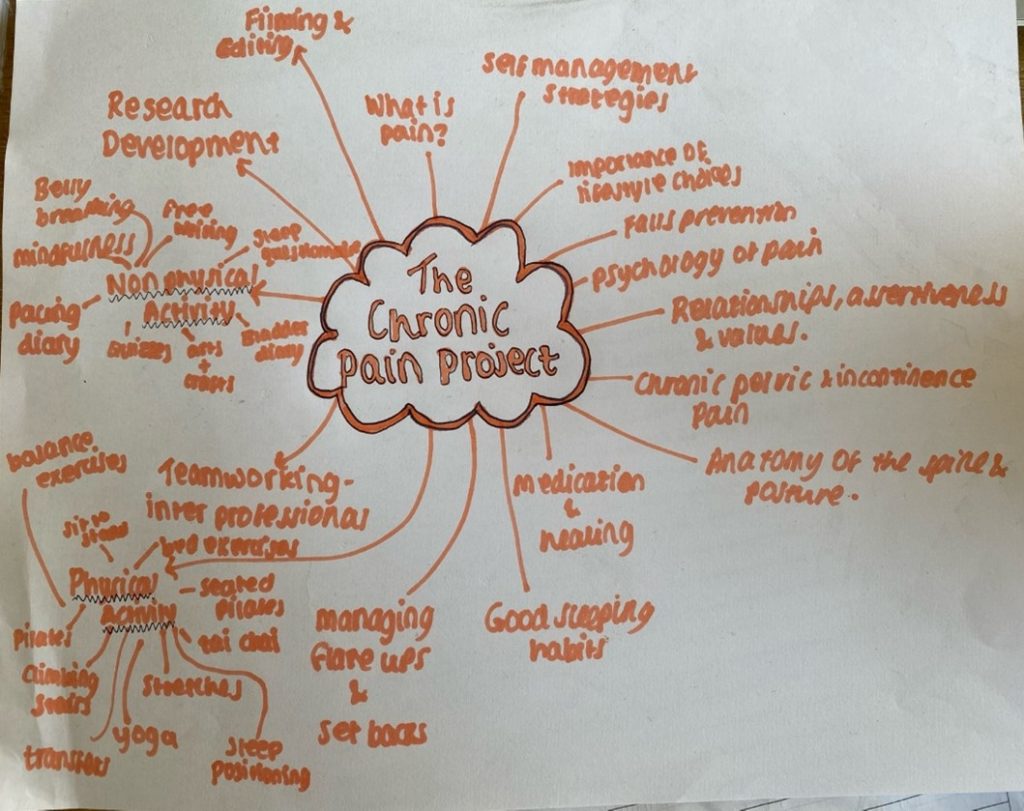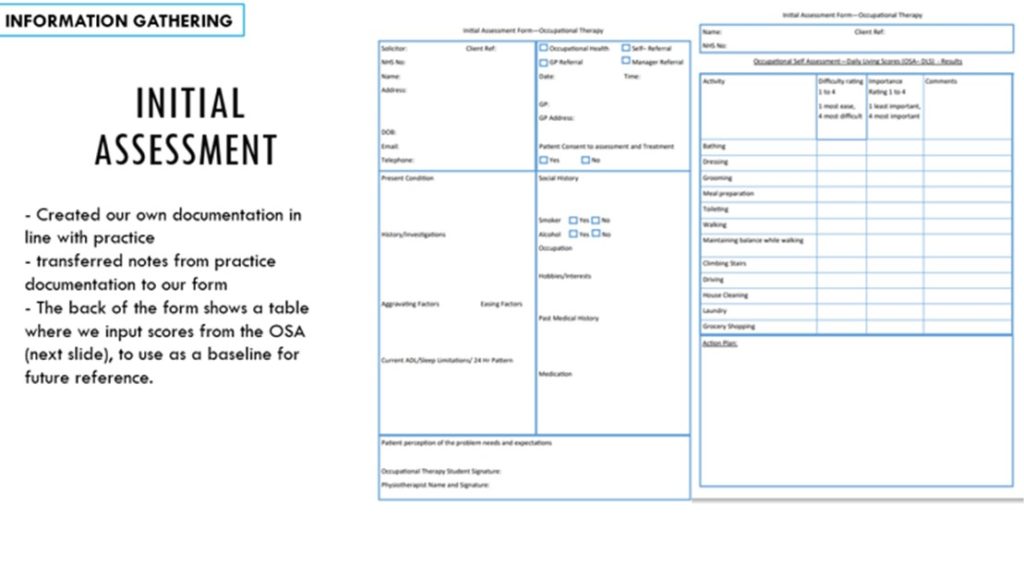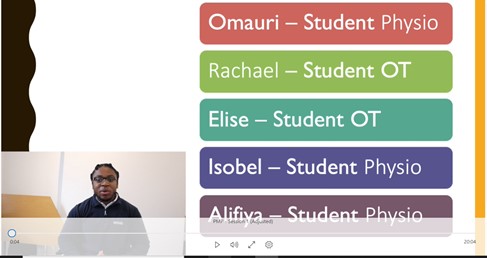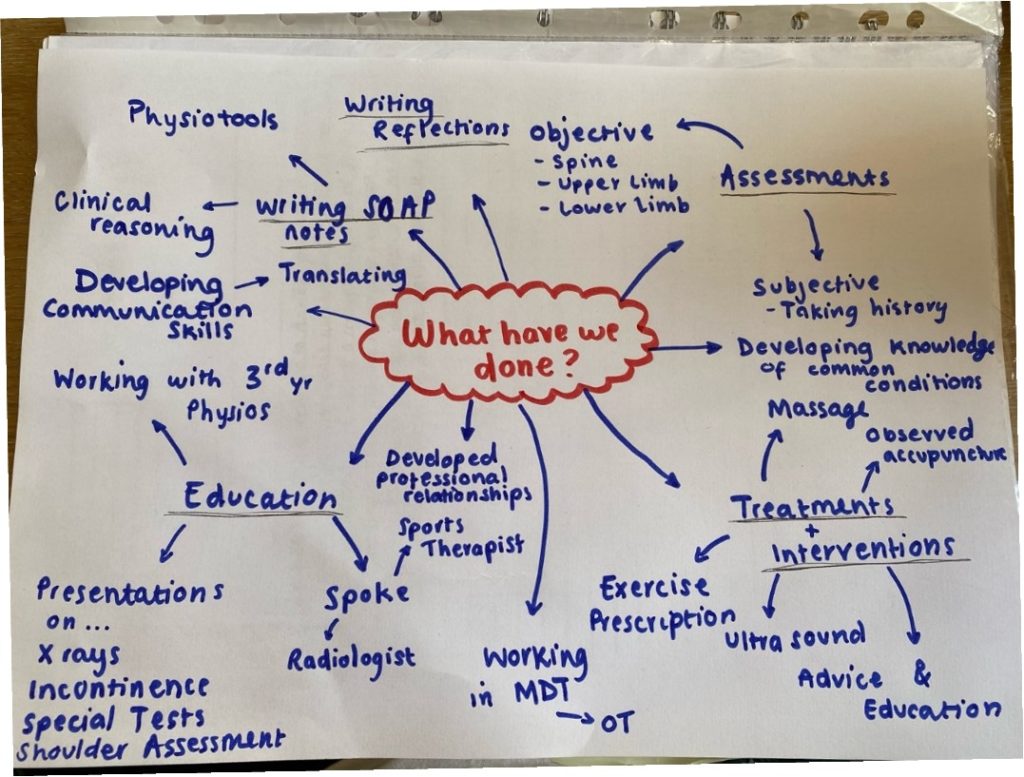Following a necessary move of premesis for Welllife Physiotherapy, CEO Lotoya Neil began to investigate the benefits of developing Occupational Therapy opportunities for her clients. This led to the creation of a Student-Led clinic, supervised by Lotoya and her colleagues.
Occupational Therapy and Physiotherapy students worked collaboratively to design the parameters of the clinic. Together they identified existing physiotherapy clients who may benefit from occupational therapy input. This team of students comprised of 2 x 2nd year Occupational Therapy students, 2 x 2nd year Physiotherapy students and 2 x 3rd year Physiotherapy students.
The project was to create a virtual pain management program for service users. The student team developed a chronic pain management program, aiming to educate patients on a variety of ways they can live well with chronic pain. They researched, filmed and created a series of 11 sessions, each covering a different topic, including psychology, self-management strategies, good sleeping habits, chronic pelvic pain and many more. They explored both physical and non-physical activities specifically for people living with chronic pain.

The students were also tasked with reviewing the evidence base to create occupational therapy assessment forms and appropriate outcome measures for use with individual patients and the pain management group.

“As an Occupational Therapy student on a contemporary placement, I have been interested to learn more about the role of my physiotherapy colleagues and to share knowledge and skills”
“Initially I felt out of my depth being in a Physiotherapy based clinic, but very quickly found my place and embraced my role in OT”.
Occupational Therapy students

Physiotherapy students had the opportunity to develop clinical reasoning skills and put them into practice during sessions. They had the opportunity to work with a variety of different professionals to provide high quality of care for each patient. In addition to this, they were able to observe and partake in several treatment interventions. including acupuncture, exercise prescription, ultrasound, manual therapy including massage and mobilisations. Sessions with the practice educator and the sports therapist enabled them to learn valuable skills like the special tests for the ankle, knee, hip and shoulder, as well as more about common conditions that are commonly seen in MSK outpatients.

“It was a fun placement, and I learnt a lot! I really enjoyed working with OTs and 3rd year physios as it gave us a chance to learn from each other and create good friendships.”
2nd year physiotherapy student
Various placement models were active during this placement as the occupational therapy students were on a role emerging placement, the physiotherapists were on a traditional placement and one of the 3rd year students was on a leadership placement as they were leading them team and project. The placement used a “Student Coaching in Practice” model of supervision, broadly developed from the Collaborative Learning in Practice model developed by colleagues in the East of England (Hill, Woodward & Arthur 2020)
References: Hill, R., Woodward, M. and Arthur, A. (2020) ‘Collaborative Learning in Practice (CLIP): Evaluation of a new approach to clinical learning’, Nurse Education Today, 85(July 2019), p. 104295. doi: 10.1016/j.nedt.2019.104295.
